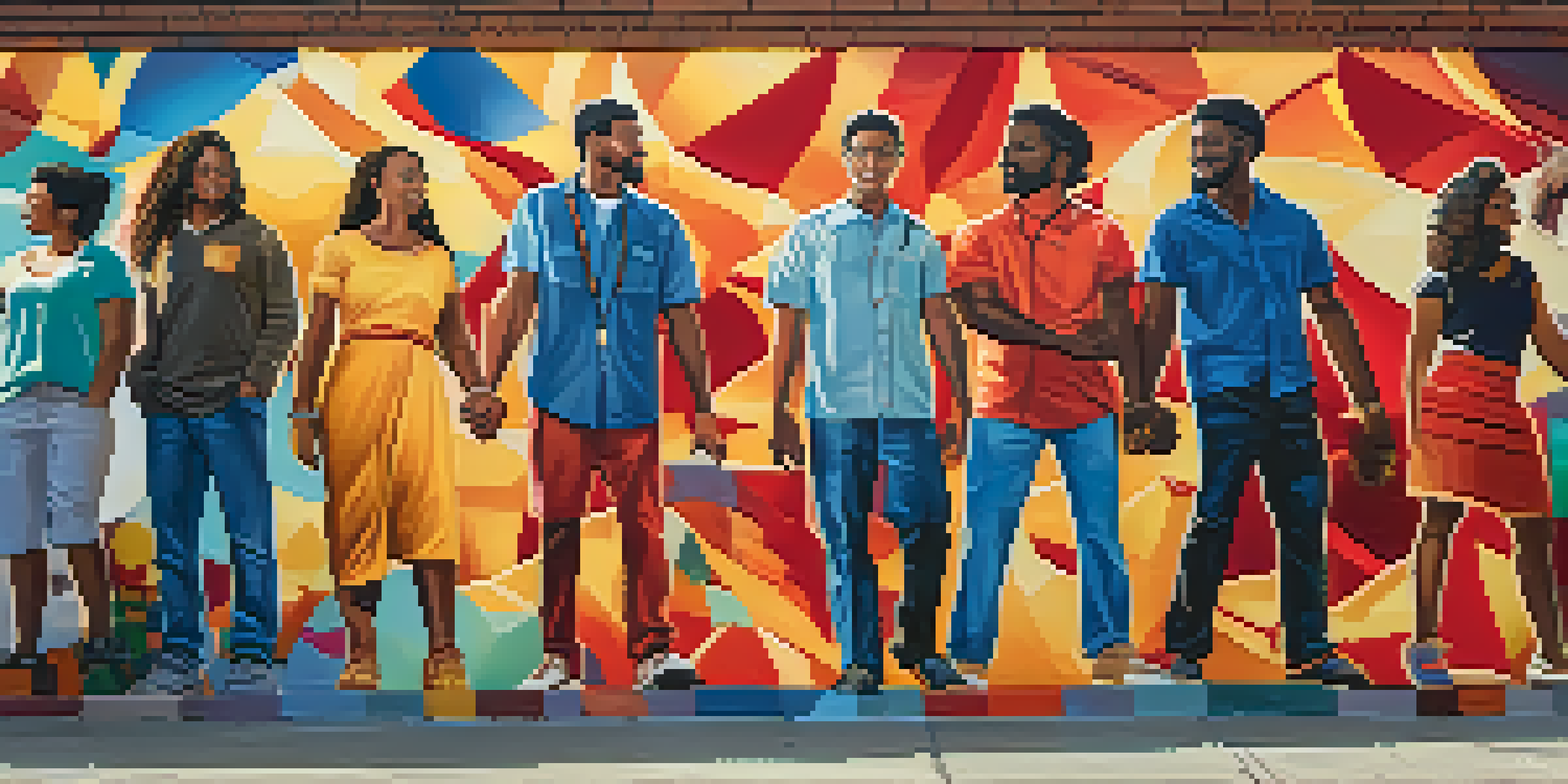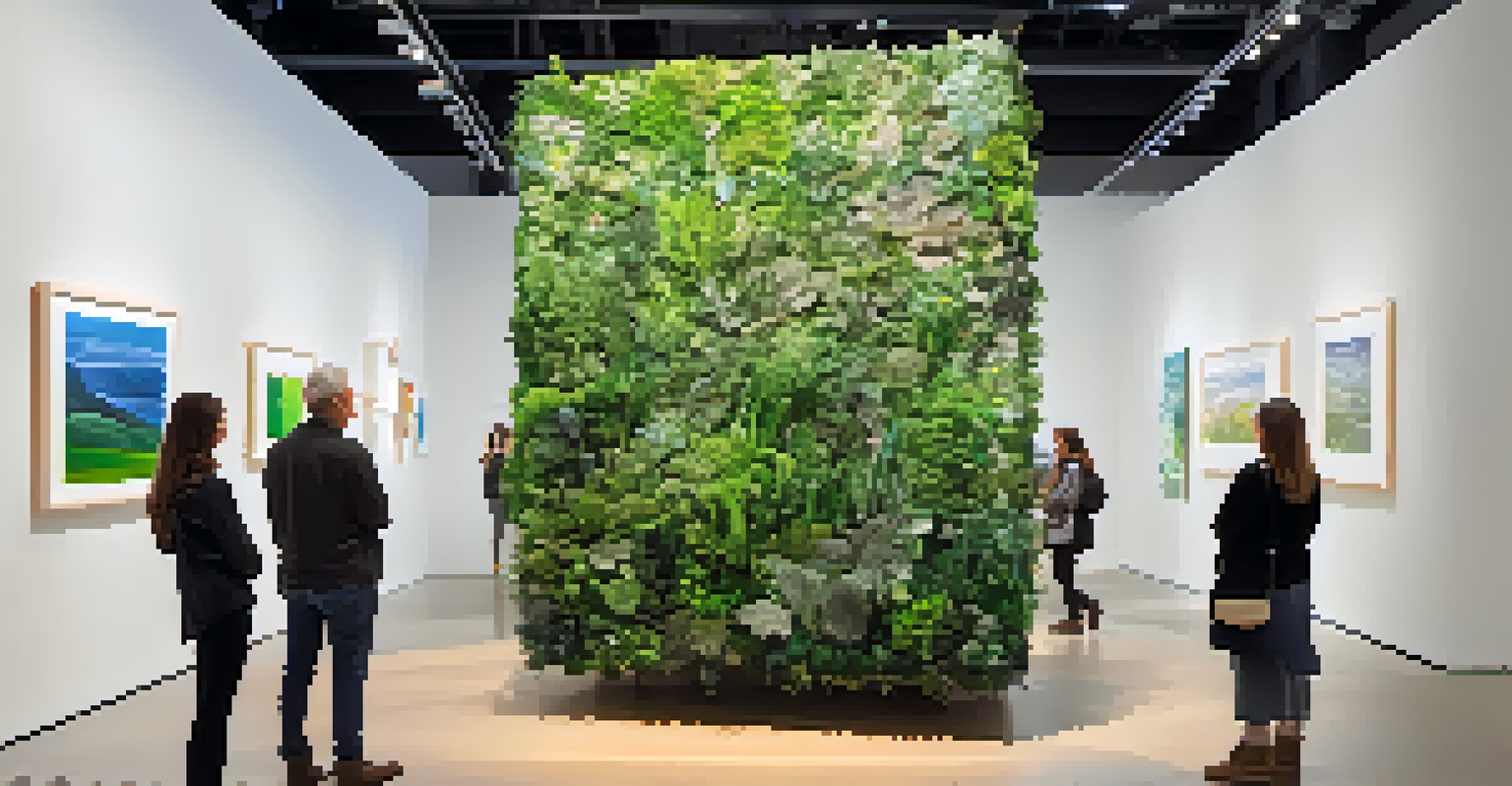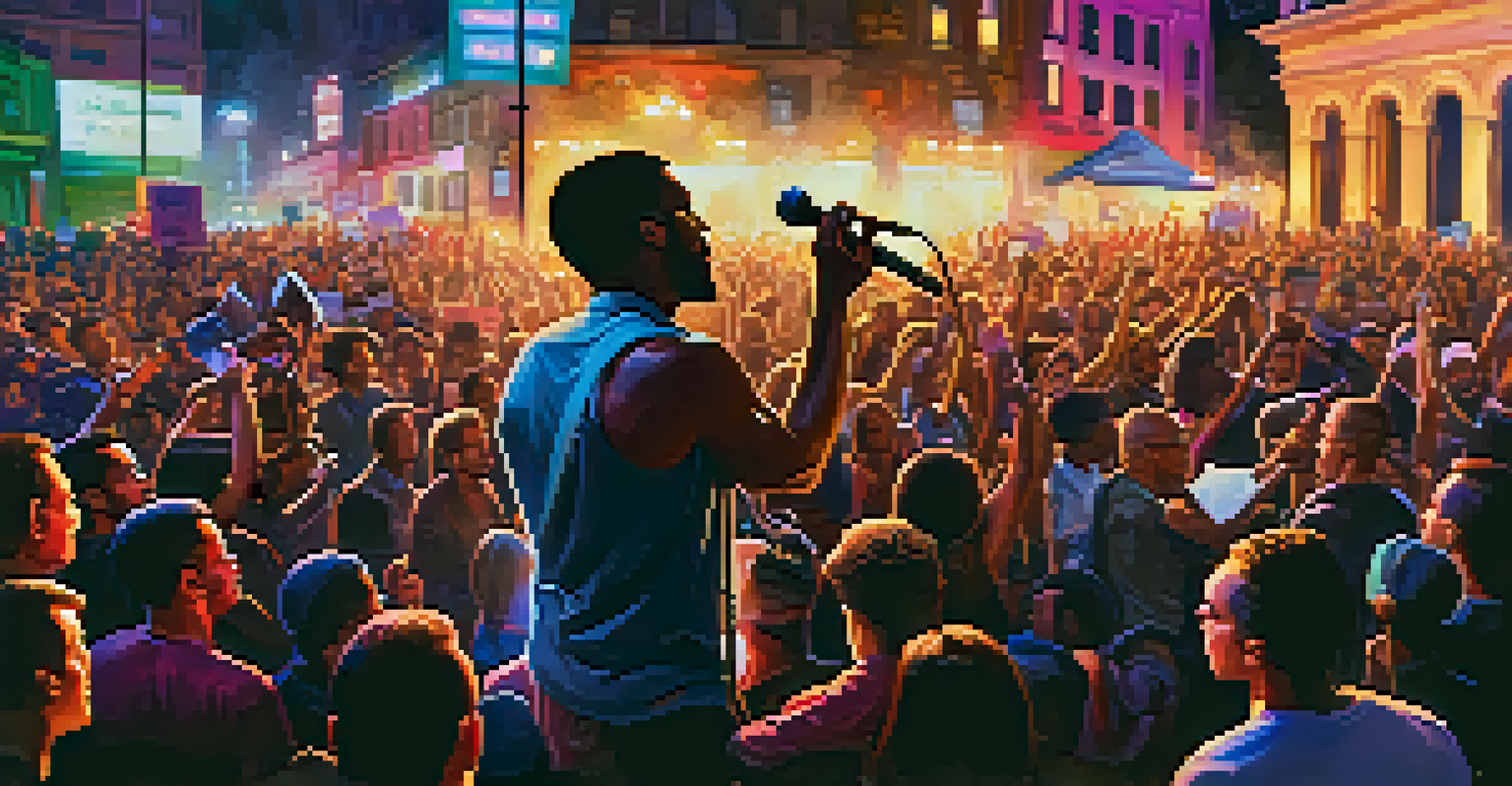The Role of Artists in Social Change: Innovation Through Activism

Understanding the Connection Between Art and Activism
Art and activism have long walked hand in hand, intertwining creativity with social movements. Artists often use their platforms to voice important issues, making complex ideas accessible through visual narratives or music. This synergy sparks conversations that challenge societal norms and inspire change, reminding us of the transformative power of creativity.
Art is not a mirror to hold up to society, but a hammer with which to shape it.
For instance, during the civil rights movement, artists like Nina Simone used their music to highlight racial injustices, creating an emotional connection that galvanized support. Similarly, street artists like Banksy have turned urban landscapes into canvases for political commentary, urging the public to reflect on pressing global issues. These examples illustrate how art can serve as a catalyst for social awareness and action.
Ultimately, the connection between art and activism is a dynamic one, where each inspires the other. As artists continue to innovate, they reshape the narrative around social issues, encouraging audiences not just to listen, but to engage and take action.
The Influence of Music in Social Movements
Music has always been a powerful tool for social change, resonating with emotions and uniting people under a common cause. From protest songs of the 1960s to contemporary anthems against inequality, music has the unique ability to articulate shared struggles and hopes. It empowers individuals, creating a sense of community that can lead to collective action.

Take, for example, the song 'Fight the Power' by Public Enemy, which became an anthem during the fight for racial equality. Its powerful lyrics and compelling beats brought urgency to the movement and inspired countless individuals to take a stand. Similarly, artists like Beyoncé have used their platform to address issues like police brutality, using their music to amplify marginalized voices.
Art as a Catalyst for Change
Art and activism intertwine to challenge societal norms and inspire social movements.
Music not only captures the spirit of a moment but also helps to sustain movements over time. As artists continue to innovate through their sound, they keep the momentum alive, motivating listeners to join the fight for social justice.
Visual Arts: A Canvas for Change
Visual arts, from paintings to installations, serve as poignant reflections of societal issues. Artists utilize their creativity to challenge perceptions, provoke thought, and inspire action, often addressing topics like climate change, inequality, and human rights. Through their work, they can evoke emotional responses that drive viewers to engage with the issues at hand.
Music can change the world because it can change people.
Consider the striking murals created by artists like Shepard Fairey, whose iconic 'Hope' poster of Barack Obama became a symbol of change. These visuals not only beautify public spaces but also carry powerful messages that resonate with the community. Additionally, installations like 'The Obliteration Room' by Yayoi Kusama encourage public interaction, fostering a collective experience that highlights the importance of community in activism.
Visual arts create a dialogue that transcends language and cultural barriers. By inviting viewers to reflect on their own beliefs and actions, artists play a crucial role in paving the way for meaningful social change.
The Role of Literature in Advocacy
Literature, through novels, poetry, and essays, has a profound impact on social change by articulating the complexities of human experience. Writers often tackle pressing issues, providing insights that inspire empathy and understanding among readers. This connection transforms passive reading into a powerful call for advocacy and change.
For instance, works like 'The Handmaid's Tale' by Margaret Atwood reflect fears about women's rights and autonomy, sparking discussions on gender equality. Similarly, poetry from authors like Amanda Gorman captures the zeitgeist of a generation, urging listeners to envision a better future. These literary pieces not only entertain but also serve as rallying cries for justice.
Music Unites for Social Justice
Music has the unique ability to resonate with emotions, fostering community and collective action for social change.
Through storytelling, literature can bridge divides, bringing together diverse perspectives in the pursuit of social justice. In doing so, writers become crucial allies in the fight for change, encouraging readers to reflect on their own roles in society.
The Digital Age: Art as a Tool for Online Activism
The rise of digital media has transformed the landscape of activism, allowing artists to reach global audiences instantly. Social media platforms serve as modern canvases where artists can share their work, engage with followers, and mobilize support for various causes. This accessibility has made it easier than ever for art to become a vehicle for social change.
For example, campaigns like #BlackLivesMatter have utilized digital art and graphics to convey powerful messages about racial injustice, reaching millions worldwide. Artists create shareable content—infographics, illustrations, and videos—that educates and inspires action, bridging the gap between art and activism. This fusion of creativity and technology empowers individuals to participate in meaningful conversations.
In the digital age, artists are not just creators but also activists and educators. By leveraging their skills online, they can inspire a new generation to advocate for social justice, proving that art remains a vital tool for change in our interconnected world.
The Power of Collaboration in Artistic Activism
Collaboration among artists, activists, and communities amplifies the impact of creative endeavors. When diverse voices come together, they can combine their strengths, pooling resources and ideas to address social issues more effectively. This collective approach fosters innovation and encourages a sense of solidarity among participants.
Take the example of the 'Art for Change' initiative, where artists from various disciplines unite to create projects that raise awareness about social justice. By collaborating, they can reach wider audiences and create multi-faceted experiences that resonate on different levels. This synergy not only enhances creativity but also strengthens community bonds.
Digital Platforms Amplify Activism
The digital age empowers artists to reach global audiences, using social media as a powerful tool for advocacy and education.
Ultimately, collaboration allows for a richer dialogue and broader representation of voices within social movements. As artists work together, they not only challenge the status quo but also inspire others to join the cause, demonstrating that collective action can lead to profound change.
The Future of Art in Social Change
As we look ahead, the role of artists in social change is poised to evolve further, influenced by technological advancements and shifting societal norms. Emerging forms of art, such as virtual reality and interactive installations, offer new ways for audiences to engage with important issues. This innovation will likely redefine how art and activism intersect in the years to come.
Moreover, the increasing focus on sustainability and ethical practices in the arts emphasizes the need for artists to address environmental and social concerns. Artists are now more attuned to their impact on the world, creating work that not only inspires but also promotes positive change. This commitment to responsible creativity will be pivotal in shaping future movements.

In this evolving landscape, artists will continue to play a vital role in advocating for social change. By harnessing their creativity and embracing new technologies, they can inspire future generations to challenge injustices and create a more equitable world.